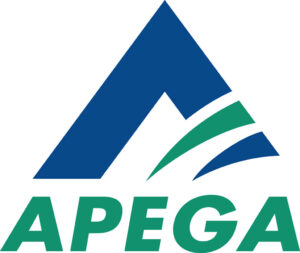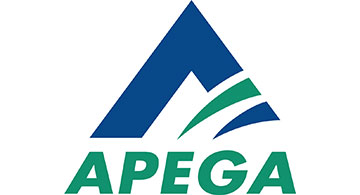 This article will focus on the Experience Requirement for the APEGA application. This is what most of the Applicants are not able to complete because of lack of understanding of the entire procedure. It must be clear that those who wish to apply for Professional Engineer or Professional Geoscientist status from APEGA must first complete the Competency Self-Assessment Worksheet found on the APEGA website to verify if you meet all of their competency requirements. By doing this, you can save time and money with starting your application process whereas if you don’t, it could end up with you missing of each of the Competency requirements. The 22 Key Competencies were discussed in the previous issues of the Alberta Filipino Journal with examples for the reader to understand more about the requirements. These 22 Competencies can also be found onthe APEGA website. Take note that completing the Competency Self Assessment Worksheet (CSAW) is free and it can also be downloaded from the APEGA website in PDF format. But is it recommended that you complete this form online so that CSAW’s results can be generated. This will help you to make a decision of whether to continue further or defer until you have substantial engineering experience.
This article will focus on the Experience Requirement for the APEGA application. This is what most of the Applicants are not able to complete because of lack of understanding of the entire procedure. It must be clear that those who wish to apply for Professional Engineer or Professional Geoscientist status from APEGA must first complete the Competency Self-Assessment Worksheet found on the APEGA website to verify if you meet all of their competency requirements. By doing this, you can save time and money with starting your application process whereas if you don’t, it could end up with you missing of each of the Competency requirements. The 22 Key Competencies were discussed in the previous issues of the Alberta Filipino Journal with examples for the reader to understand more about the requirements. These 22 Competencies can also be found onthe APEGA website. Take note that completing the Competency Self Assessment Worksheet (CSAW) is free and it can also be downloaded from the APEGA website in PDF format. But is it recommended that you complete this form online so that CSAW’s results can be generated. This will help you to make a decision of whether to continue further or defer until you have substantial engineering experience.
After you find out that your self-assessment has resulted in a favorable conclusion, in that your experience from what you have “self- assessed” meets the APEGA requirement, you can continue by completing the Work Record Validator List (WRVL) and Competency-Based Assessment Too (CBAT).
The Work Record Validator List (WRVL) is a high-level, chronological overview of your experience. It includes brief details of your employment positions, responsibilities, and experience. Each WRVL page must include:
• The name of the employer you worked for and the position you held there
• The country the work was performed in
• Your start date, your end date, and the total months you worked for the company
You must provide at least 48 months of engineering experience supported by validators and references. However, you are encouraged to provide all your relevant experience.
A validator is a Professional Engineer (P.Eng.) who took technical responsibility for your work. Validators will be asked to review your self-assessment and provide a score and commentary for each competency that was assigned. Validators will also be asked to provide overall feedback about your suitability and readiness for registration.
Work Record Validators
A validator must have first-hand knowledge of the examples you provide and be able to comment on the quality and competency of your work. Supervisors, mentors, managers, colleagues, or clients are all possible validators for your application. You must provide at least three validators who can rate and validate the indicators that you provide for each of the 22 key competencies.
Colleagues or mentors that you did not directly work with do not qualify to be validators, because validators need to have taken technical responsibility for your work.
If your validator is not registered with an engineering regulatory body in another Canadian jurisdiction, please identify the following:
• Professional designation
• Registration country
Work Record References
A reference is a person who can confirm your position and the duration of your experience with a company. This person can be your manager, a colleague, or a human resources staff member. Your reference does not need to have technical knowledge of your work and does not need to have been your direct supervisor.
You need at least one reference for each employer you have worked for. A reference can also be a validator.
The complete forms for the Work Record Validator List will be completed online and need to be submitted online through the Applicant portal.
The Competency-Based Assessment Tool (CBAT) is an electronic form designed to capture your understanding and achievement of the 22 key competencies required for registration as a Professional Engineer or Licensee.
When completing each page of the form, you will provide:
• at least one situation in which you proved competency
• several actions you took within the situation that support your competency
• the outcome of your actions. This should include a basic summary of the solution, product, process, or other outcome of the situation and your actions
APEGA’s Board of Examiners will assess your competence on the information you and your validators provide—and nothing else. Be sure to focus on your personal contributions to a situation and provide details about the decisions you made. You should write in first person (“I” statements instead of “we”) to show ownership.
Competencies are skills or knowledge that APEGA has identified as crucial to the professional practice of engineering. They are based on your decisions, behaviours, or applications of skill or knowledge, in response to different employment situations.
Each competency is evaluated against a score from 0 to 5.
• 0 demonstrates no awareness for the competency
• 5 shows a mature level of practice
You will assess yourself on each key competency. You must meet a minimum score of 1 on each key competency while also meeting the minimum overall average level for each competency category.
Indicators are generalized examples of skills or behaviours that illustrate how you may have achieved a given competency. The indicators provided by APEGA serve as a framework for you to determine which aspects of your work experience apply for each key competency. They can also highlight deficiencies you may have. Include specific details of your personal work experience for every competency. Do not copy and paste the generic indicators provided.
Once you have approved and submitted your CBAT, your validators will be contacted to complete a Validator Response Form (VRF) for each key competency validation you have assigned to them. They will provide their own ratings of your competencies on the same five-point scale you have used. They will also add comments they feel are necessary.
The information above about the WRVL and CBAT are lifted directly from the APEGA website so that the information here is as accurate as possible at the time of writing. After completing these online forms – you need to pay the necessary processing fees and will continue to the next stage of the assessment.
For more information, visit the APEGA website at www.apega.ca or email the writer for more detailed advice.


